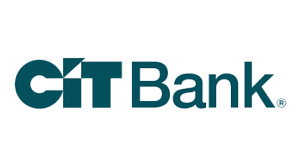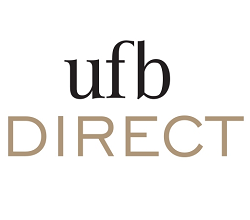You have a lot of options when it comes to choosing a savings account, but here's one you may not have considered. The Chase Savings℠ offers a nationwide branch network and industry-leading customer service. Plus, customers get access to powerful online and mobile money management tools.
In this detailed review, we'll take a look at how the Chase Savings℠'s fees, features, and annual percentage yield (APY) stack up to competitors. Read on to determine whether this account is right for you (and do so with confidence).
Chase Savings℠

- Large, nationwide branch network
- Highly rated customer service
- Automated savings tools for those with linked Chase checking accounts
- Unimpressive APY
- Monthly maintenance fee
- Fees for making more than six monthly withdrawals
The Chase Savings account doesn't offer a high APY, but it remains a popular pick because of the bank's impressive customer service and huge branch network. Those who prefer personalized, in-person support will find Chase difficult to beat.
Compare savings rates
Make sure you're getting the best account for you by comparing savings rates and promotions. Here are some of our favorite high-yield savings accounts to consider.
Chase Savings℠ interest rate
| Account | APY | Minimum Deposit |
|---|---|---|
| Chase Savings℠ | 0.01% | $0 |
Brick-and-mortar banks just aren't known for offering high APYs, due to their higher overhead costs. Chase Savings℠'s APY is no exception here, and you'll find much higher rates with online banks. At least you don't need a set amount of money to open the account.
Full Chase Savings℠ review
Top perks
Large branch network: Chase is one of the largest banks in the nation, with more than 4,800 branches in 48 states. Even if you travel throughout the United States, chances are you won't have to go too far to find a Chase Bank branch. It also offers more than 16,000 ATMs across the country.
Excellent customer service: Chase earned the second-highest rating in J.D. Power's most recent U.S. National Banking Satisfaction Study. This indicates that most customers are satisfied with the products and support it provides.
Automatic savings feature: The Chase Savings℠'s Autosave program lets you automate transfers from your Chase checking to savings account. You can transfer as little as $1 per day, and you can choose how often you'd like to transfer funds. The program also enables you to set rules, like transferring a certain portion of deposits over $100.
What could be improved
APY: The Chase Savings℠ won't earn you much in interest -- just 0.01%, even if you have a large balance. Those who prioritize high annual percentage yields (APYs) should look into our list of the best high-yield savings accounts instead.
Maintenance fee: The Chase Savings℠ charges you a $4.95 monthly fee in order to own the account. This is typical of brick-and-mortar banks, and there are several ways to waive the fee. But it may not be the best choice for those who can't get the fee waived.
Excess withdrawal fee: For years, a federal law known as Regulation D led banks to charge consumers extra for making more than six "convenient" savings account withdrawals in a month. But this law was suspended at the start of the COVID-19 pandemic. Yet the Chase Savings℠ still continues to charge you for making more than six monthly withdrawals.
How to access your money
Chase Savings℠ customers have several options for depositing and withdrawing money from their account.
Deposit options
You can deposit money into your Chase Savings℠ in any of the following ways:
- Cash or check deposit at a branch
- ATM deposit
- Mobile check deposit
- Direct deposit
- ACH transfer
- Wire transfer
Withdrawal options
Here are your choices for withdrawing money from your Chase Savings℠:
- Branch withdrawal
- ATM withdrawal
- ACH transfer
- Wire transfer
- Requesting a mailed check
Note that any withdrawal type may count toward your maximum six monthly withdrawals. Chase may charge you for withdrawing money more than six times per month.
Chase Savings℠ is right for you if:
The Chase Savings℠ could be a good fit for you if:
- You prefer banking in person.
- Personalized customer support is important to you.
- You don't withdraw cash from your savings account too often.
Keep reading about Chase Bank
- Chase Bank Review
- Chase CD Rates
- Chase Total Checking Review
- Chase Business Complete Banking Review
- Chase Bank Promotions
Our savings account methodology
At The Motley Fool Ascent, we rate savings accounts on a five-star scale (1 = poor, 5 = best). We evaluate all savings accounts across four main criteria: annual percentage yield (APY), brand and reputation, fees and minimum requirements, and perks that really make a difference -- think ATM access, linked checking accounts, or even branch access.
Our scores are weighted as:
- APY: 50%
- Brand and reputation: 20%
- Fees and minimums: 15%
- Other perks: 15%
Learn more about how The Motley Fool Ascent rates bank accounts.
FAQs
-
To avoid the account maintenance fee, one of the following must be true:
- You have $300 in the account.
- You, the account owner, are under 18.
- You set up Autosave to transfer $25 or more from Chase Checking to Savings.
- Your Chase College Checking account is linked to this account for overdraft protection.
- You've linked a Chase Premier Plus Checking℠, Chase Sapphire℠ Checking, or Chase Private Client Checking℠ account.
If any of the above are true, you will not be charged a monthly fee to maintain your Chase Savings Account.
-
Chase charges you a monthly service fee starting two months after the account is opened (i.e. after the first two statement periods). Until then, you will not be charged. Should you get your fee waived, you will not be charged at all.
Our Banking Experts
We're firm believers in the Golden Rule, which is why editorial opinions are ours alone and have not been previously reviewed, approved, or endorsed by included advertisers. The Ascent, a Motley Fool service, does not cover all offers on the market. The Ascent has a dedicated team of editors and analysts focused on personal finance, and they follow the same set of publishing standards and editorial integrity while maintaining professional separation from the analysts and editors on other Motley Fool brands.


